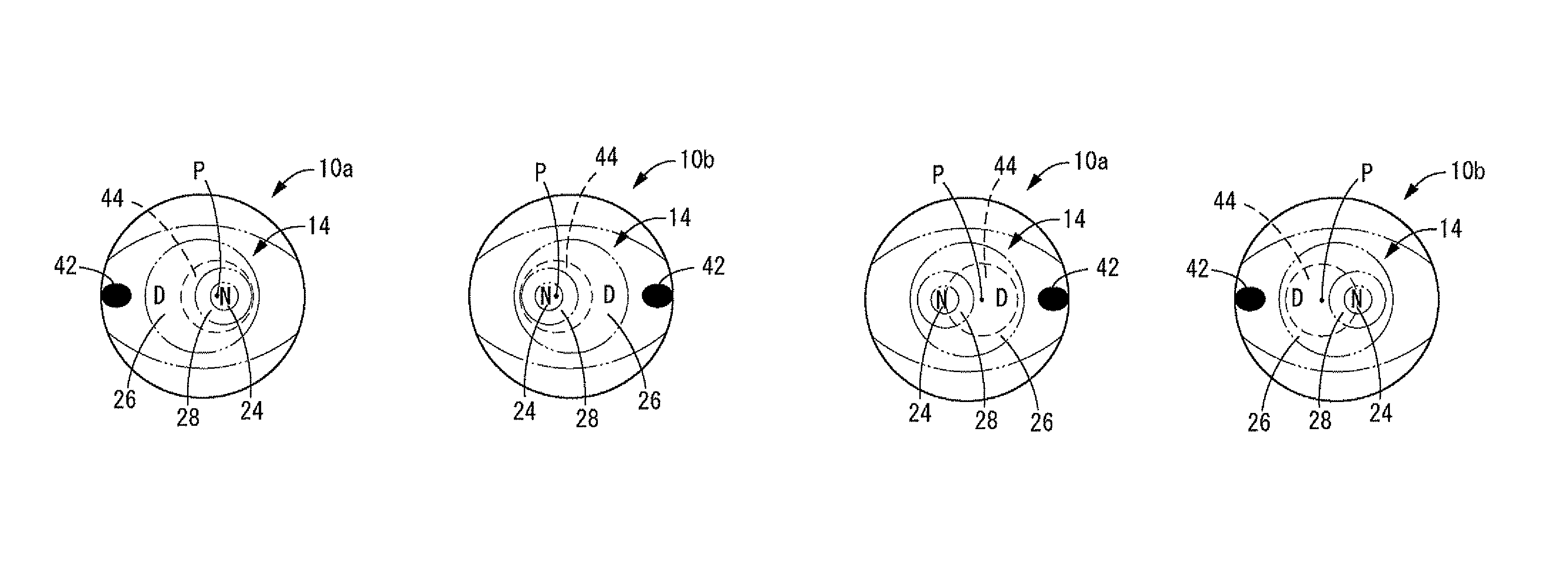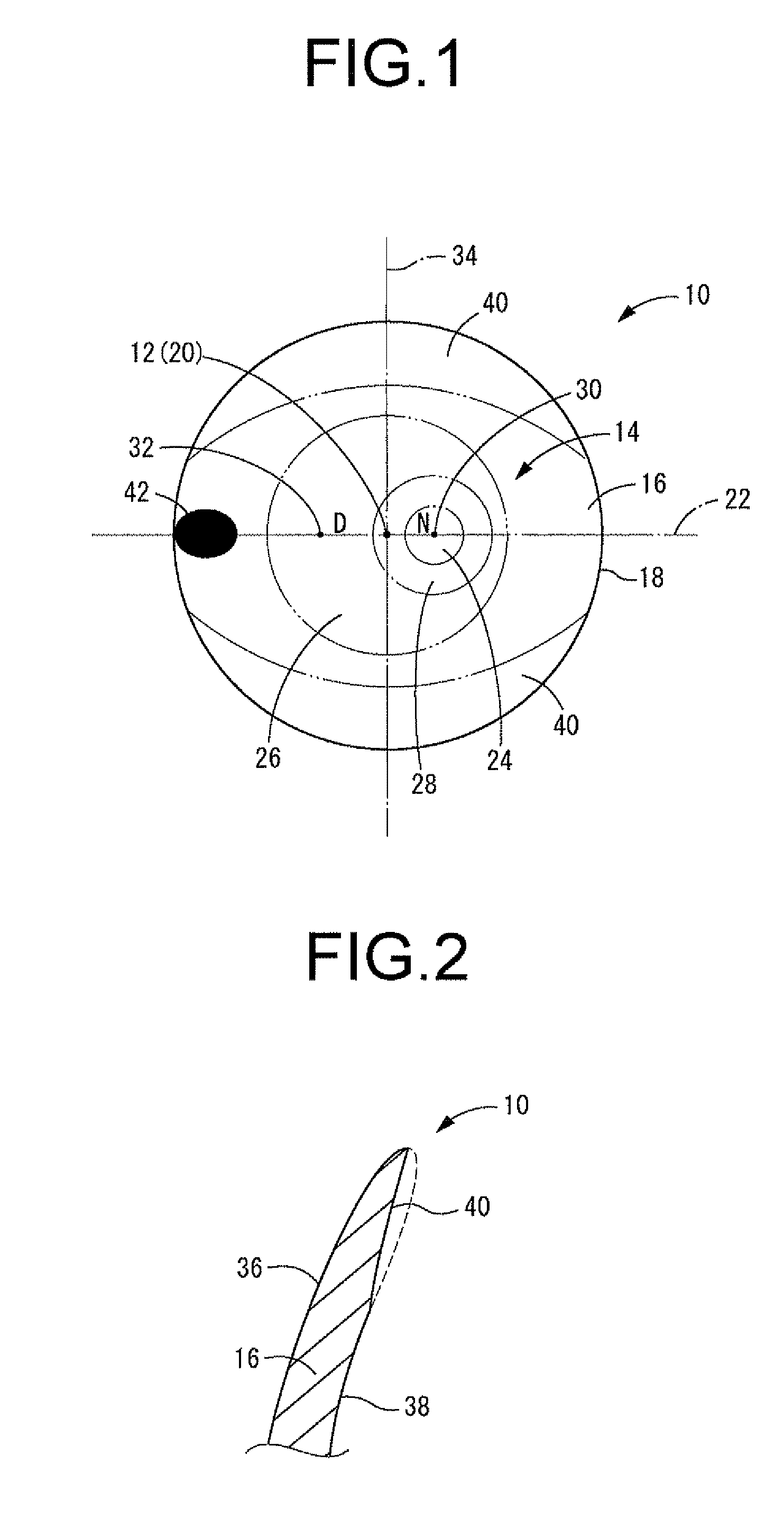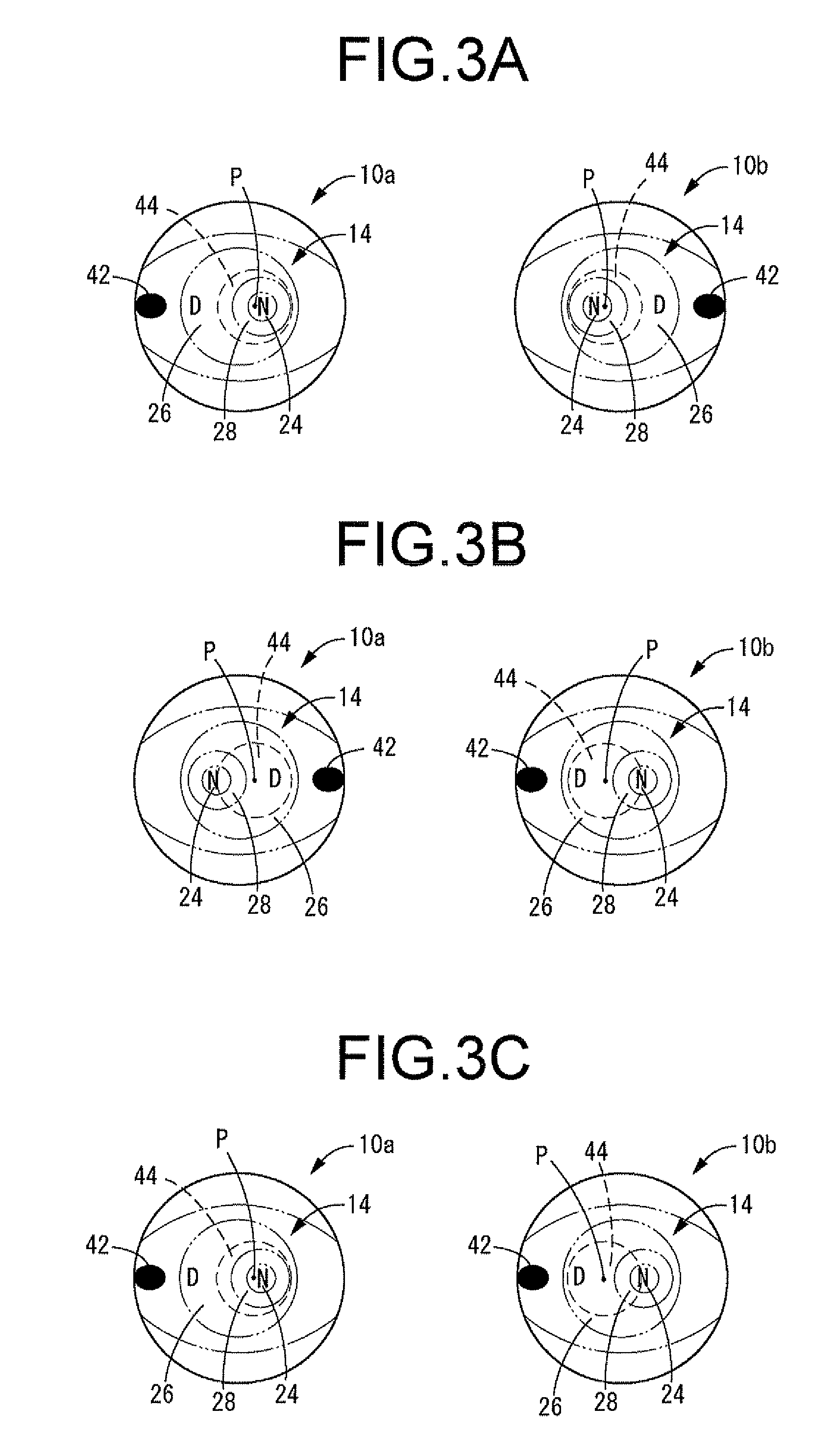Wearing-orientation selectable contact lens
a contact lens and orientation technology, applied in the field of contact lenses, can solve the problems of inability to afford effective correction neither for distance vision nor for near, increase in production cost or management cost, and poor optical characteristics, and achieve excellent manufacturing efficiency
- Summary
- Abstract
- Description
- Claims
- Application Information
AI Technical Summary
Benefits of technology
Problems solved by technology
Method used
Image
Examples
first embodiment
[0041]First, FIG. 1 depicts a contact lens 10 as a wearing-orientation selectable contact lens according to the present invention. As seen in front view depicted in FIG. 1, the contact lens 10 is approximately spherical shell shaped overall having the profile of a solid of revolution defined by rotation about a lens geometric center axis 12. The contact lens 10 is adapted to be worn superimposed on the surface of the cornea of the eye. In FIG. 1 and FIGS. 3A through 7 described later, the symbols “N” and “D” denote the locations of the near optical zone and the distance optical zone respectively for convenience' sake.
[0042]The contact lens 10 according to the present embodiment is a contact lens of soft type, material for which is not limited in any particular way. For example, conventional known hydrated materials such as PHEMA (polyhydroxyethyl methacrylate), PVP (polyvinyl pyrrolidone), or non-hydrated materials such as acrylic rubber, silicone could be used.
[0043]The contact len...
fourth embodiment
[0065]Next, FIG. 7 depicts a contact lens 70 as a wearing-orientation selectable contact lens according to the present invention. In the present embodiment, the optical zone geometric center axis 20 is positioned decentered from the lens geometric center axis 12 on the symmetrical meridian 22. The optical zone 14 may be positioned decentered from the lens geometric center axis 12 in this way, to an extent such that no problems are encountered during wear.
[0066]While the present invention has been shown above through certain preferred embodiments, these are merely illustrative and should not be construed as limiting the invention in any way to the specific disclosure in the embodiments.
[0067]For example, the present invention is applicable to bifocal lenses having two focal points, to multifocal lenses having more than two focal points, and to progressive multi-focal lenses. In addition, the lens does not require a distinct boundary between the first diopter power region and the seco...
PUM
 Login to View More
Login to View More Abstract
Description
Claims
Application Information
 Login to View More
Login to View More - R&D
- Intellectual Property
- Life Sciences
- Materials
- Tech Scout
- Unparalleled Data Quality
- Higher Quality Content
- 60% Fewer Hallucinations
Browse by: Latest US Patents, China's latest patents, Technical Efficacy Thesaurus, Application Domain, Technology Topic, Popular Technical Reports.
© 2025 PatSnap. All rights reserved.Legal|Privacy policy|Modern Slavery Act Transparency Statement|Sitemap|About US| Contact US: help@patsnap.com



